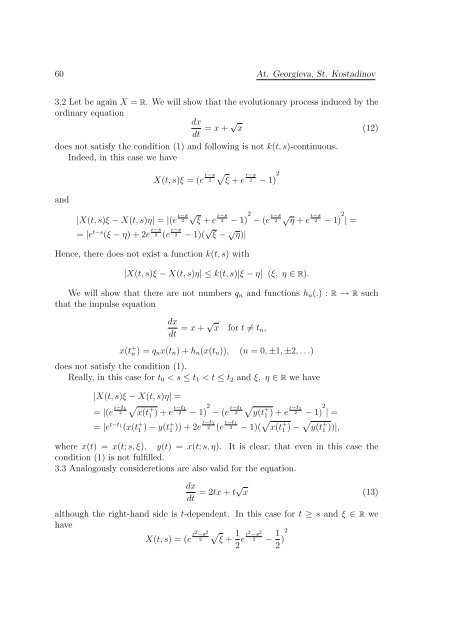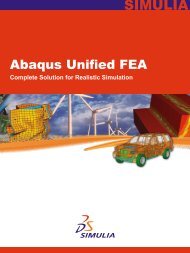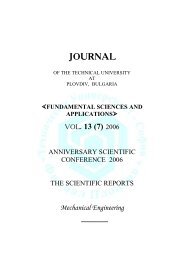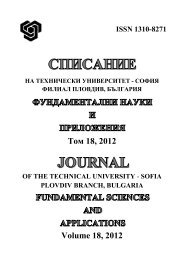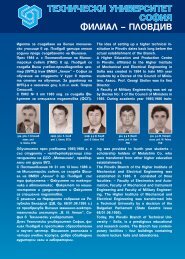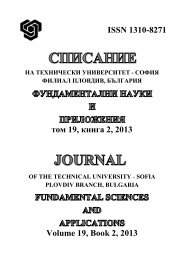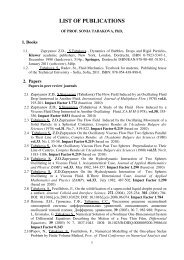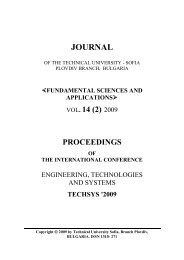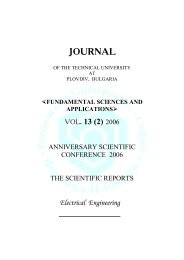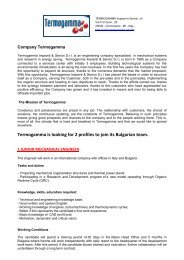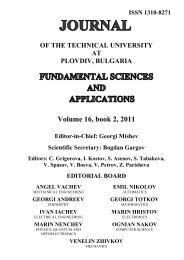JOURNAL Series A - Pure and Applied Mathematics
JOURNAL Series A - Pure and Applied Mathematics
JOURNAL Series A - Pure and Applied Mathematics
You also want an ePaper? Increase the reach of your titles
YUMPU automatically turns print PDFs into web optimized ePapers that Google loves.
60 At. Georgieva, St. Kostadinov3.2 Let be again X = R. We will show that the evolutionary process induced by theordinary equationdxdt = x + √ x (12)does not satisfy the condition (1) <strong>and</strong> following is not k(t, s)-continuous.Indeed, in this case we have<strong>and</strong>X(t, s)ξ = (e t−s √ t−s2 ξ + e 2 − 1) 2|X(t, s)ξ − X(t, s)η| = |(e t−s √ t−s2 ξ + e= |e t−s (ξ − η) + 2e t−s2 (e t−s2 − 1)( √ ξ − √ η)|Hence, there does not exist a function k(t, s) with2 − 1) 2 − (e t−s2|X(t, s)ξ − X(t, s)η| ≤ k(t, s)|ξ − η| (ξ, η ∈ R).√ η + et−s2 − 1) 2 | =We will show that there are not numbers q n <strong>and</strong> functions h n (.) : R → R suchthat the impulse equationdxdt = x + √ x for t ≠ t n ,x(t + n ) = q n x(t n ) + h n (x(t n )), (n = 0, ±1, ±2, . . .)does not satisfy the condition (1).Really, in this case for t 0 < s ≤ t 1 < t ≤ t 2 <strong>and</strong> ξ, η ∈ R we have|X(t, s)ξ − X(t, s)η| == |(e t−t √12 x(t+1 ) + e t−t 12 − 1) 2 − (e t−t 12√y(t+1 ) + e t−t 12 − 1) 2 | == |e t−t 1(x(t + 1 ) − y(t + 1 )) + 2e t−t 12 (e t−t 12 − 1)( √ x(t + 1 ) − √ y(t + 1 ))|,where x(t) = x(t; s, ξ), y(t) = x(t; s, η). It is clear, that even in this case thecondition (1) is not fulfilled.3.3 Analogously consideretions are also valid for the equation.dxdt = 2tx + t√ x (13)although the right-h<strong>and</strong> side is t-dependent. In this case for t ≥ s <strong>and</strong> ξ ∈ R wehaveX(t, s) = (e t2 −s 2 √ 12 ξ +2 e t2 −s 22 − 1 22 )


